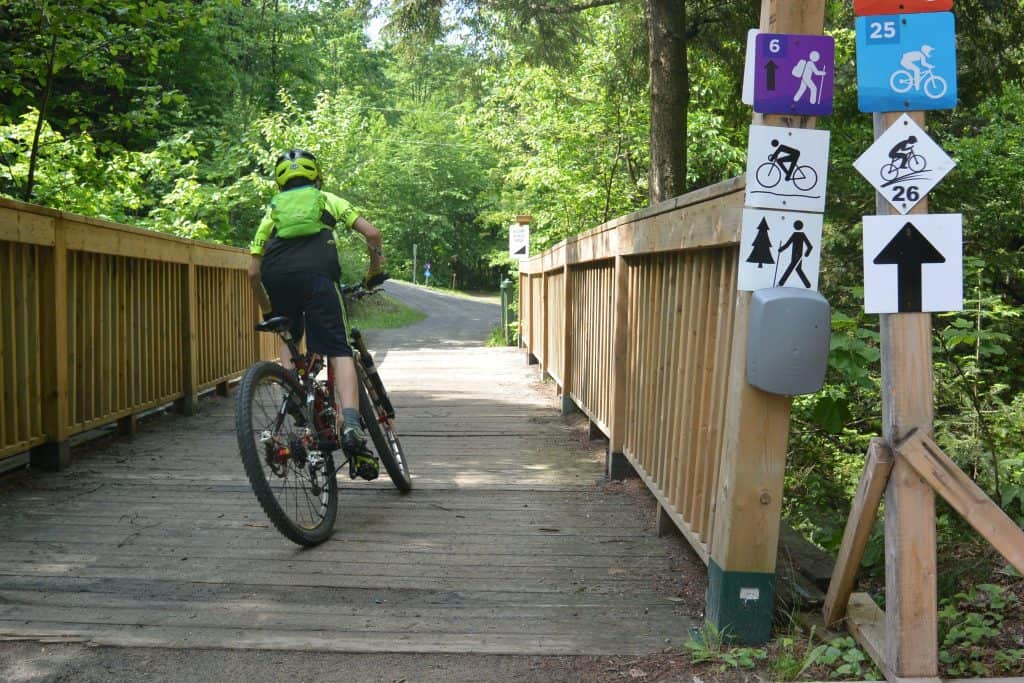The mountain biking season is in full swing, with the majority of practice sites having reopened their trails in recent weeks. With the arrival of the first warm days, it’s the perfect time to dust off your saddle and stretch your legs. Spring is also a time for chores. The trails, which have spent the winter under the snow, need a little help before they can be fully appreciated. Every year, thousands of volunteers and professionals get involved to ensure that their sport remains accessible and safe.
The current craze for mountain biking sometimes makes us forget its long journey to take root in the province. Many of the mountain biking destinations that now delight enthusiasts across Quebec started out modestly and informally, before becoming official trails later on. If the major mountain bike centers are the stepping stones for mountain biking in Quebec, local trails are the gateway. It’s these places close to home that allow young people to be introduced to the sport, and enthusiasts to take up the sport on a regular basis.
For many, the arrival of the summer cycling season can be a disappointment, as many trails will never reopen. Indeed, access to natural territory and outdoor activities such as off-road cycling remain precarious. Despite the steady increase in the number of mountain bikers across the province, many trail networks disappear every year, despite the efforts and energy deployed by communities to keep them open. This situation is not limited to informal networks, as major centers such as Empire 47 have recently seen their trails threatened.
In the last Bulletin de l’activité physique, we learned that the activity rate among children and young people remains insufficient. If we hope to reverse this trend, it is essential to focus on leisure activities that are accessible, free and, above all, that appeal to young people.
Mountain biking is often wrongly perceived as incompatible with the conservation of natural environments. However, it is entirely possible to create safe and accessible local trails that respect the environment. It has been shown that, when properly developed, mountain bike trails are equivalent to hiking trails in terms of their impact on the environment. Local mountain biking is also an incredible lever for mobilizing and raising public awareness of nature conservation. The citizen mobilization that led to the creation of the Parc des Sommets and, more recently, the 15,000-name petition to save the Marmota are excellent examples.
As a national recreational organization, Vélo Québec recognizes that cycling, and mountain biking in particular, is inextricably linked to land access. The vitality of our cycling culture depends not only on the development of new cycling sites, but above all on the protection and sustainability of existing trails.
Local networks must be recognized as public infrastructures in their own right, since they meet tangible needs and help revitalize the communities in which they are located. With this in mind, Vélo Québec is delighted that the recent revision of the Orientations gouvernementales en aménagement du territoire (OGAT) incorporates some of our recommendations concerning the recognition and protection of public access to natural territories. We hope that these new orientations will be promptly incorporated into regional and local planning documents to protect all local outdoor practices and consolidate the accessibility, safety and sustainability of mountain bike trails throughout Quebec.
Jean-François Rheault
President and CEO, Vélo Québec


